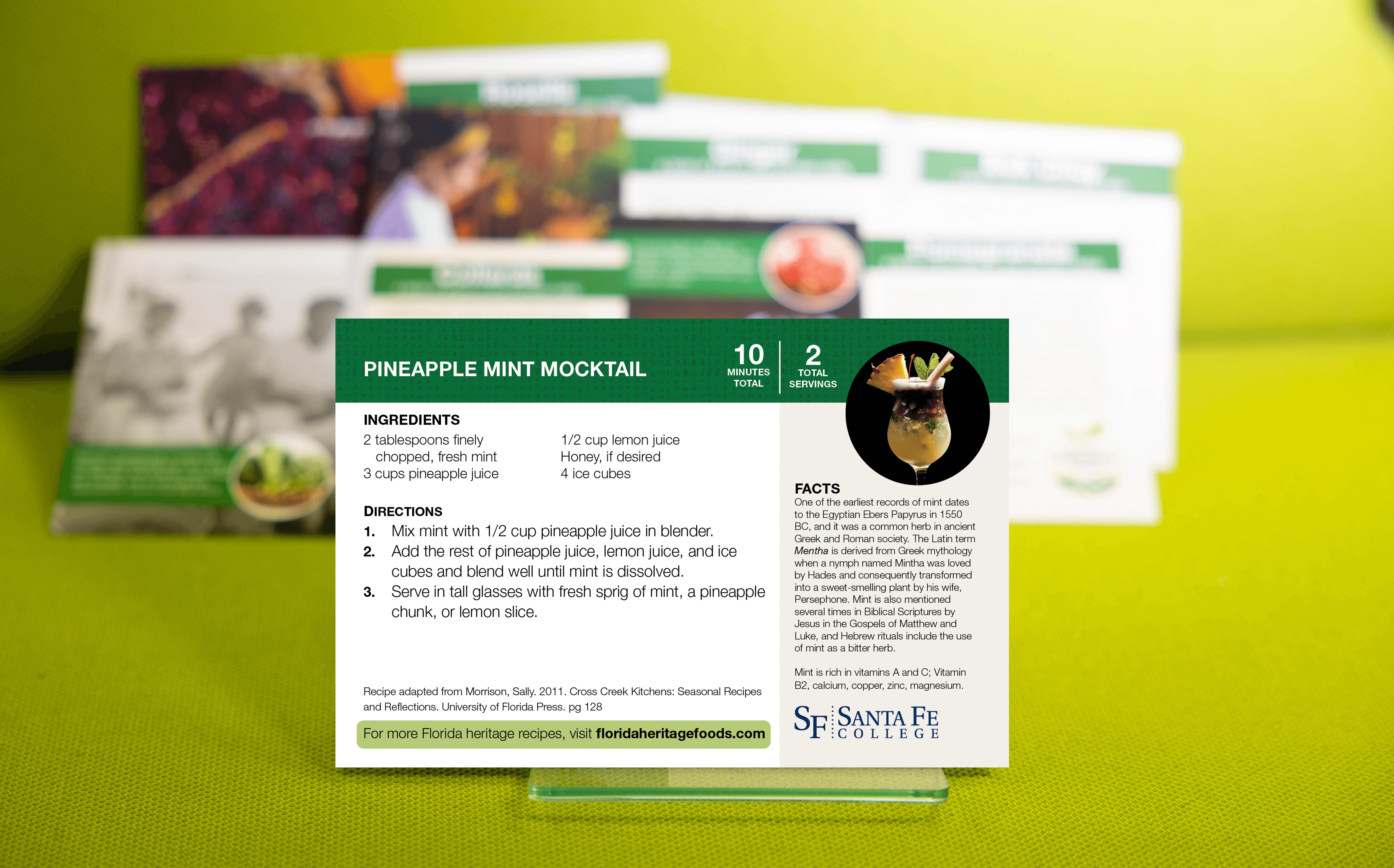Mint
Mentha sp

Menta (Spanish), menthe (French), 薄荷 (báo hé, Mandarin), टकसाल केपत्ते (Taksal ke patte, Hindi), ફુદીના (Phudīnā, Gujarati), Mnanaa (Swahili), Reexaanta (Somali)
Mint is native to the Mediterranean, and the herb has a long history in religion, mythology, ritual, medicinal uses, and cuisines throughout the region. There are approximately 20 different varieties of mint including ‘peppermint’ and ‘spearmint,’ and numerous cultivars and hybrids. Yet scholars believe that Biblical scriptures refer to ‘horsemint’ (Mentha longifolia) in the books of Matthew and Luke. Mint grows abundantly throughout the world, and many Florida home gardeners grow mint for a variety of culinary and medicinal uses.

Mint originated in the eastern Mediterranean region, and it has been used as food and medicine for more than 3500 years. It spread into western and northern Europe through trade, and it was introduced to the Americas through European colonialism. Mint has been cultivated into several different cultivars and varieties such as the common ‘peppermint’ and ‘spearmint’ as well as experimental scents and flavors such as ‘chocolate mint,’ ‘apple mint,’ and ‘mohito.’ Mint is grown all over the world today, yet the United States is among the top producers of mint and mint varieties in the world. Mint has been a popular addition to Florida herb gardens for generations, and a growing number of chefs use fresh mint in specialty foods and beverages.
One of the earliest records of mint dates to the Egyptian Ebers Papyrus in 1550 BC where it was mentioned as a digestive aid. It was a common herb in ancient Greece where it was added to a fermented barley drink named kykeon, and in Roman society it was used in funeral rites to scent the body. The Latin term Mentha is derived from Greek mythology when a nymph named Mintha was loved by Hades and consequently transformed into a sweet-smelling plant by his wife, Persephone. Mint is also mentioned several times in Biblical Scriptures by Jesus in the Gospels of Matthew and Luke, and Hebrew rituals include the use of mint as a bitter herb. Mint’s greatest value comes from its aromatic properties for use as a food flavoring and perfume. It can be used in both sweet and savory dishes that include candies, gums, and teas. Mint is an ingredient in Vietnamese spring rolls and san choy bow; Greek tzatziki; Persian sekahnjebin drink, Turkish soups and teas; and the Cuban mojito beverages. In American cuisine, mint is common in candies and gums, desserts, sauces for meat (such as lamb), mint julep drinks, cough drops, and essential oils. Mint is also important in ‘Soupa,’ which consists of a spiced gravy poured over sliced bread with big springs of fresh mint.

Mint is rich in vitamins A and C; Vitamin B2, calcium, copper, zinc, magnesium.


Direct sow, transplant, or grow from cuttings March through October, harvest May through September. Mint spreads, and it may be best to contain in a pot to prevent the herb from taking over the garden.
Flowers attract pollinators.
To plan, a heritage garden, download the ‘Planning a Florida Heritage Garden (PDF).’

Santa Fe College Partnered with Multiple Organizations in a Collaborative Effort to Bring Awareness of the Heritage Plants In Florida.
BY CULTURAL HISTORY
BY GROWING SEASON
DROUGHT TOLERANT PLANTS
Commitment to Equal Access and Equal Opportunity
Santa Fe College is committed to an environment that embraces diversity, respects the rights of all individuals, is open and accessible, and is free of harassment and discrimination. For more information, visit sfcollege.edu/eaeo or contact equity.officer@sfcollege.edu.
SACSCOC Accreditation Statement
Santa Fe College is accredited by the Southern Association of Colleges and Schools Commission on Colleges (SACSCOC). For more information, visit sfcollege.edu/sacscoc.
